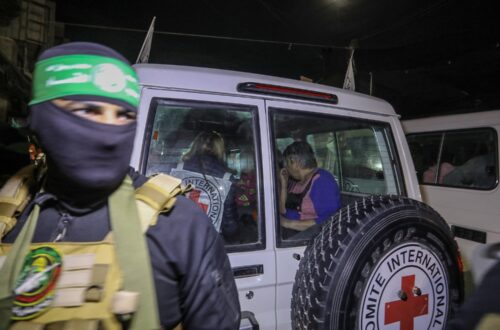It’s not often that a researcher has occasion to combine a love of caving with a passion for ancient biblical Hebrew graffiti. So when Ariel University lecturer Dr. Asaf Gayer proposed a fun outing to his geologist colleague Boaz Langford to do just that, it was already promising to be a momentous trip.
The time was ripe to re-photograph a known paleo-Hebrew inscription in a cave near Ein Gedi, Gayer suggested. This time, the partial inscription — painted on a stalactite with carbonite ink circa the 7th century BCE — should be photographed using multispectral imaging. Such imaging has already done wonders to reveal invisible text on pottery sherds and other engravings. Who knows?
The duo decided to invite Israel Antiquities Authority photographer Shai Halevi to join them in their quest and they went to the cave and completed their mission.
Before leaving the cave, however, Gayer decided to perform a short archaeological survey, checking in nooks and crannies.
“When one goes into a cave, there’s always a feeling that you’re going to find something,” he told reporters on Wednesday at the unveiling of the four 1,900-year-old Roman swords that were discovered there.
“Realizing you have a piece of history in your hand is simply wonderful… you feel your heart beat faster, your blood pressure goes up… This is why we’re in this business,” he said.

Dr. Asaf Gayer, of the Department of Land of Israel Studies and Archaeology at Ariel University, September 6, 2023 at the Israel Antiquities Authority in Jerusalem. (Amanda Borschel-Dan/Times of Israel)
But while the discovery of the extremely rare swords grabbed all the headlines, Gayer’s new reading of the First Temple period inscription is also of note.
CSI Ein Gedi
In 1973, Ofra Aharoni, an instructor at the Ein Gedi Field School, came across the three-line First Temple period inscription in a cave with two levels of single chambers that are filled with stalactites.
After a short excavation of the caves in 1974 (which overlooked the swords), the inscription was published in 1975 by Pessach Bar-Adon. His article in the Israel Exploration Journal was illustrated by photographs taken by members of the Criminal Identification Unit of the National Police Headquarters — the 1970s version of CSI.
In 1975, explained Gayer on Wednesday, Bar-Adon deciphered the text as reading: Blessed is God (Adonai) / Blessed XXX / Blessed is God (Elohim).
Gayer had a hunch that with even a few more letters discovered through modern high-tech imaging, he may be able to make a little more sense of it.
The trio of cave explorers photographed the inscribed stalactite from numerous angles. The numerous photographs aid in overcoming the rock’s rough and curved surface. But still, the results were only partial.

Near the Ein Gedi cave overlooking the Dead Sea where the four 1,900-year-old Roman swords were discovered. (Israel Antiquities Authority)
He stated that he was able to clearly see the Hebrew letters bet, gimmel and yud following the word “Blessed,” along with a word-dividing dot that is typical of the First Temple era. Gayer’s reading of the word is “in the valley,” writing valley in a variant spelling that appears several times in the Bible.
After this breakthrough, using tedious manually programmed computer imaging, Gayer attempted to reconstruct other partial letters. What he believes he can safely hypothesize is that the following word is heh, mem, lamed and het or, in English, “the salt.”
The locale the “Valley of Salt” appears in several biblical texts, including 2 Samuel 8:13 and Psalms 60:2 — spelled in the variant found on the stalactite. Both of these instances are in relation to King David, who in the psalm gives thanks to God for his acts that led to victory in the Valley of Salt.
While biblical scholars generally consider its location to be in the region of the Dead Sea, “having an external source that tells us about the area right above the Dead Sea” is significant, said Gayer.

Archaeologists sift dirt from the cave in the Judean Desert where four Roman swords were discovered, with a view of the Dead Sea. (Matan Toledano/IAA)
Gayer presented his initial findings at an IAA conference on Wednesday night and will publish an academic article after further research.
But on Wednesday, as reporters milled about the IAA’s impressive new Jerusalem headquarters, Gayer waxed poetic when suggesting who wrote this blessing and why.
“Maybe it is in thanksgiving for surviving in this rough region,” he said.






